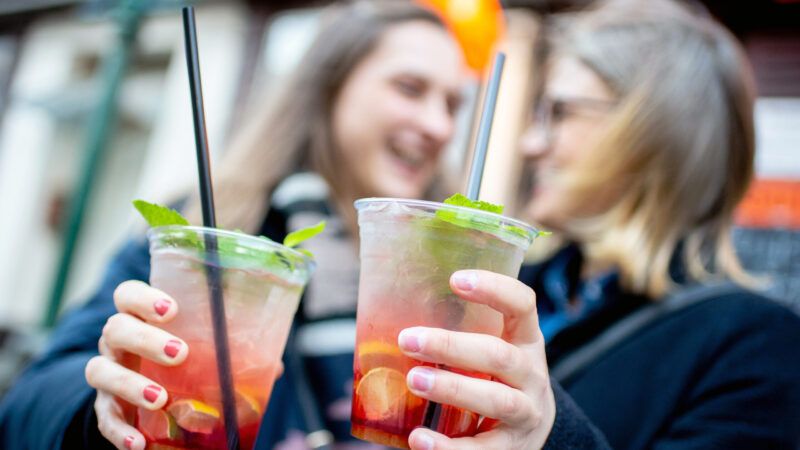How COVID-19 Changed Alcohol Forever
At least 20 states will permanently allow to-go cocktails, and more may be coming.

Since March 2020, Americans have had to embrace a seemingly endless number of unexpected changes to everyday life thanks to the pandemic. While in-person concerts and sporting events are back for the most part, more Zoom meetings and telehealth appointments seem like sure bets to stick around. Other surprising pandemic trends are also proving durable—namely, to-go and delivery alcohol went from a legal sideshow to one of the largest policy tidal waves in modern times.
New research demonstrates just how many states implemented delivery and to-go alcohol changes during COVID-19. All told, 32 out of 50 states (nearly 65 percent) have applied one or more changes to their to-go and delivery alcohol rules since the pandemic started.
To break it down further, 29 out of 50 states have extended or made permanent the ability of restaurants and bars to either sell to-go cocktails or to deliver those cocktails. Twenty of these states permanently enshrined to-go cocktails, while the rest extended to-go drinks at least through 2023. (This research did not count temporary emergency orders that will expire once the pandemic subsides.)
The COVID-19 alcohol reform wave is not just limited to to-go margaritas, either. During the pandemic, 10 states greenlighted the ability of groceries or liquor stores to deliver alcohol to our doors. That brings the total number of states allowing some form of store-to-consumer alcohol delivery to over 40.
Alcohol producers were also not left out of the reform party. While most states allowed wine to be shipped to consumers even before the pandemic, only a small handful of states permitted beer and distilled spirits to be locally delivered or shipped long distance. But during COVID-19, 13 states expanded the ability of breweries and distilleries to deliver everything from growlers to fifths of bourbon right to our doorsteps.
In an age when pretty much every single consumer product imaginable is part of the online, mail-order economy, alcohol remained largely on the sideline until COVID-19 came along. Even so, there are still limits when it comes to alcohol: It remains very difficult to ship alcohol across state lines, which shows that we are still a long way off from a truly national alcohol market.
There are strong policy justifications for expanding to-go and delivery of alcohol beyond the pandemic. Craft alcohol producers are some of the strongest proponents of expanding delivery options since doing so gives them direct market access to their consumer base—something that businesses in most other industries take for granted. Similarly, most restaurants and bars are independently owned entities that operate on notoriously thin profit margins, meaning that the ability to expand alcohol sales can be a vitally needed economic lifeline.
Consumers are also strongly in favor of more alcohol delivery. According to data from the Distilled Spirits Council, 80 percent of Americans want to be able to order distilled spirits directly from their favorite distillery and have it delivered to their doors. Consumer surveys on making to-go cocktails permanent also show overwhelming support.
To the extent some have expressed concerns over this unprecedented expansion of to-go and delivery alcohol, most of the arguments emphasize the intoxicating character of alcohol. This overlooks the fact that far more dangerous substances—such as pharmaceuticals, ammunition, and pesticides—have been part of the delivery economy for decades with little issue.
Other opponents have pointed to the potential for more underage drinking in a world where alcohol can be delivered or included in a takeout order. Once again, this misses the mark as state governments have made clear that the same robust ID-ing protocols that apply for alcohol sales at a store or restaurant also apply to takeout or delivery alcohol.
In the end, it is clear that to-go and delivery alcohol is here to stay. Over the last 18 months, America has witnessed one of the most immense and fast-moving policy tidal waves in modern history. And so far, there are few signs of it slowing down.


Show Comments (28)